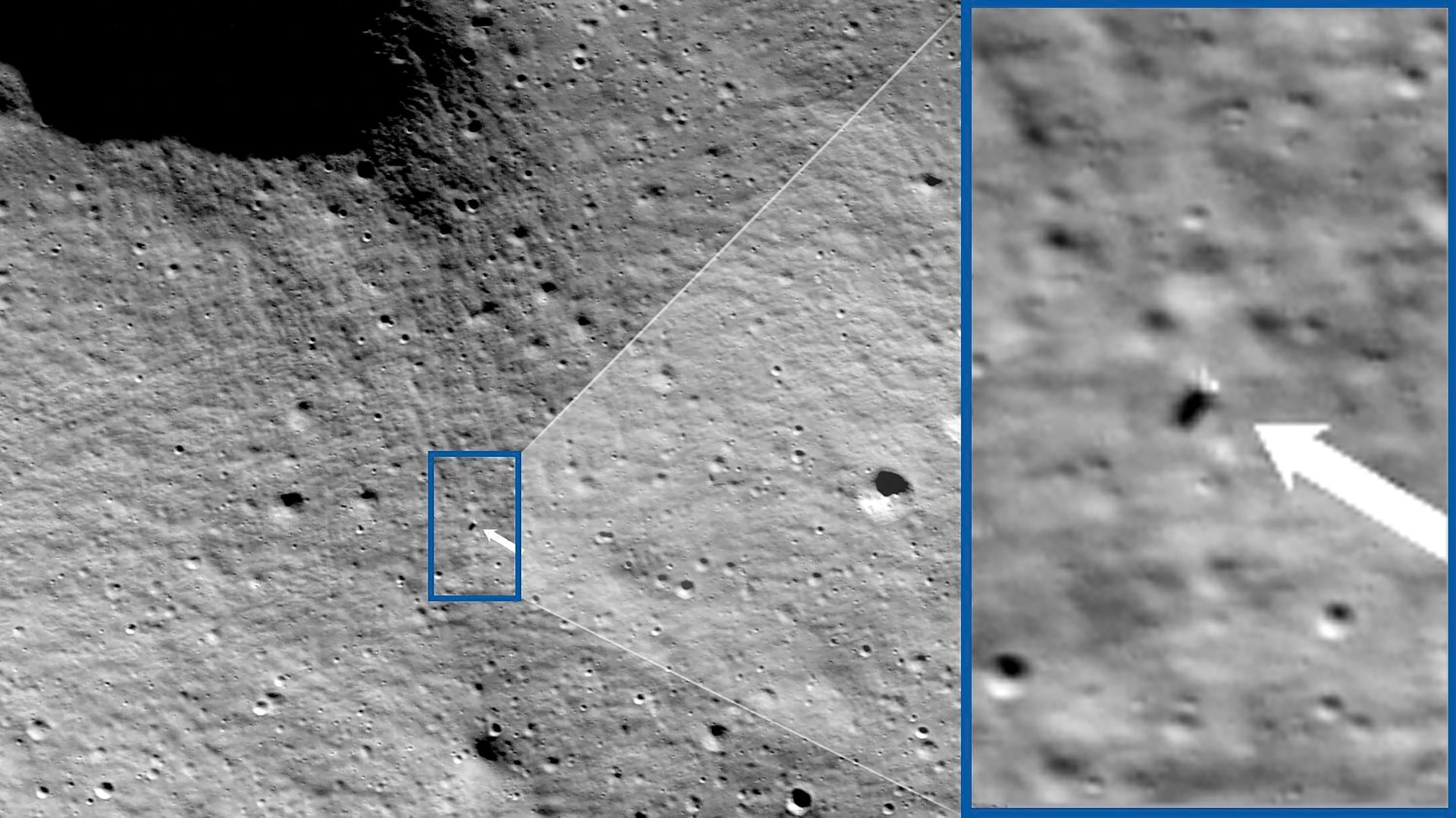Sideways moon landing cuts mission short, private US lunar lander will stop working Tuesday
A private U.S. lunar lander is expected to stop working Tuesday, its mission cut short after landing sideways near the south pole of the moon

CAPE CANAVERAL, Fla. (AP) — A private U.S. lunar lander is expected to stop working Tuesday, its mission cut short after landing sideways near the south pole of the moon.
Suggested Reading
Intuitive Machines, the Houston company that built and flew the spacecraft, said Monday it will continue to collect data until sunlight no longer shines on the solar panels. Based on the position of Earth and the moon, officials expect that to happen Tuesday morning. That's two to three days short of the week or so that NASA and other customers had been counting on.
Related Content
The lander, named Odysseus, is the first U.S. spacecraft to land on the moon in more than 50 years, carrying experiments for NASA, the main sponsor. But it came in too fast last Thursday and the foot of one of its six legs caught on the surface, causing it to tumble over, according to company officials.
Based on photos from NASA's Lunar Reconnaissance Orbiter flying overhead, Odysseus landed within a mile or so (1.5 kilometers) of its intended target near the Malapert A crater, just 185 miles or so (300 kilometers) from the moon's south pole.
The LRO photos from 56 miles (90 kilometers) up are the only ones showing the lander on the surface, but as little more than a spot in the grainy images. A camera-ejecting experiment by Embry-Riddle Aeronautical University, to capture images of the lander as they both descended, was called off shortly before touchdown because of a last-minute navigation issue.
According to NASA, the lander ended up in a small, degraded crater with a 12-degree slope. That's the closest a spacecraft has ever come to the south pole, an area of interest because of suspected frozen water in the permanently shadowed craters there.
NASA, which plans to land astronauts in this region in the next few years, paid Intuitive Machines $118 million to deliver six experiments to the surface. Other customers also had items on board.
Instead of landing upright, the 14-foot (4.3-meter) Odysseus came down on its side, hampering communication with Earth. Some antennas were covered up by the toppled lander, and the ones still exposed ended up near the ground, resulting in spotty communications. The solar panels also ended up much closer to the surface than anticipated, less than ideal in the hilly terrain. Even under the best of circumstances, Odysseus only had a week to operate on the surface before the long lunar night set in.
Since the 1960s, only the U.S., Russia, China, India and Japan have successfully pulled off moon landings, and only the U.S. with crews. Japan’s lander ended up on the wrong side, too, just last month.
Despite its slanted landing, Intuitive Machines became the first private business to join the elite group. Another U.S. company, Astrobotic Technology, gave it a try last month, but didn't make it to the moon because of a fuel leak.
Intuitive Machines almost failed, too. Ground teams did not turn on the switch for the lander's navigating lasers before the Feb. 15 liftoff from Florida. The oversight was not discovered until Odysseus was circling the moon, forcing flight controllers to rely on a NASA laser-navigating device that was on board merely as an experiment.
As it turned out, NASA's test lasers guided Odysseus to a close to bull's-eye landing, resulting in the first moon landing by a U.S. spacecraft since the Apollo program.
Twelve Apollo astronauts walked on the moon from 1969 through 1972. While NASA went on to put an occasional satellite around the moon, the U.S. did not launch another moon-landing mission until last month. Astrobotic's failed flight was the first under NASA’s program to promote commercial deliveries to the moon.
Both Intuitive Machines and Astrobotic hold NASA contracts for more moon landings.
___
The Associated Press Health and Science Department receives support from the Howard Hughes Medical Institute’s Science and Educational Media Group. The AP is solely responsible for all content.
